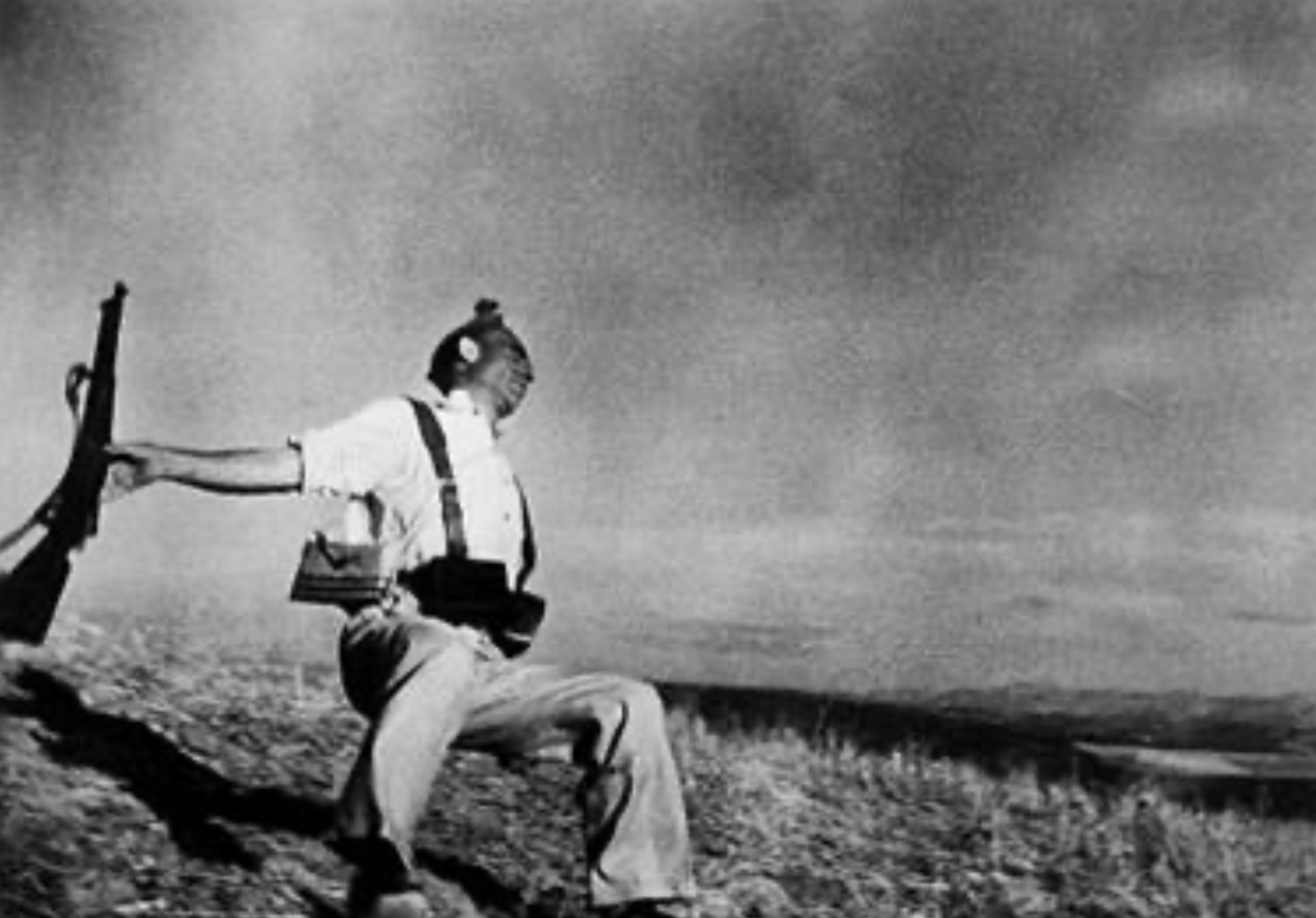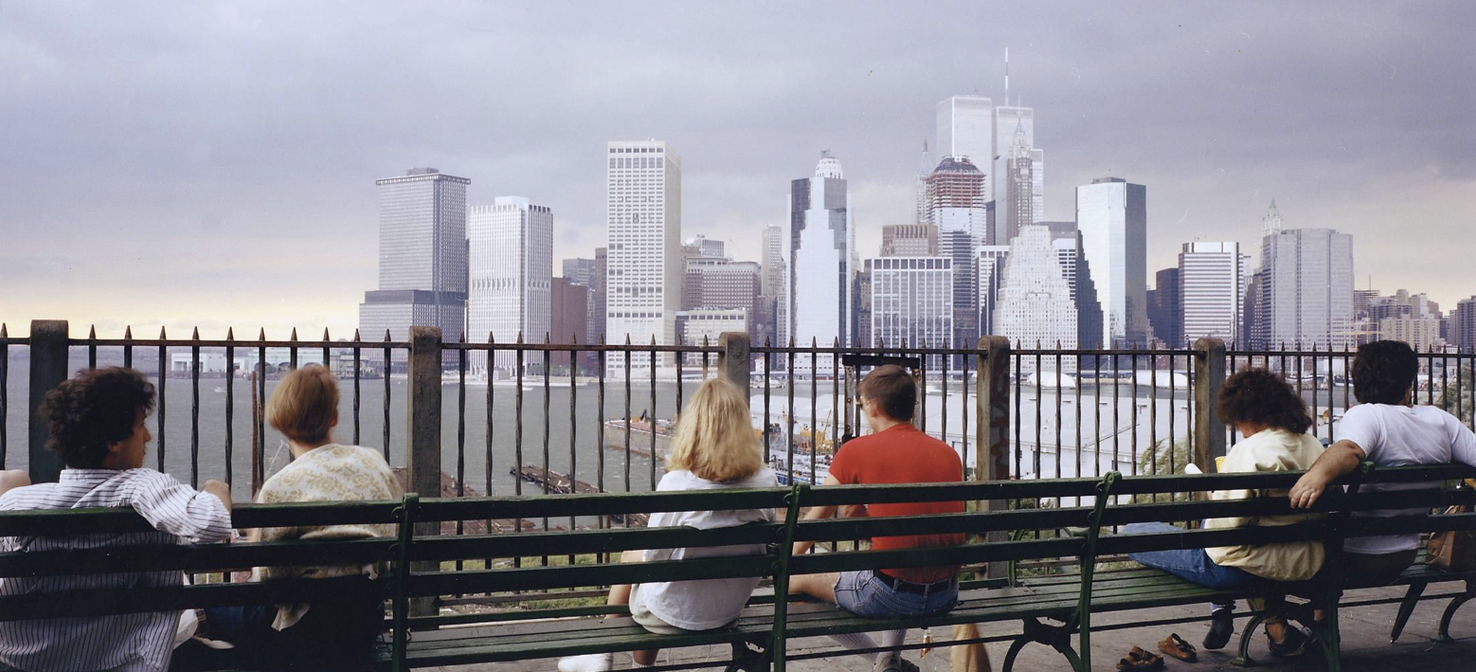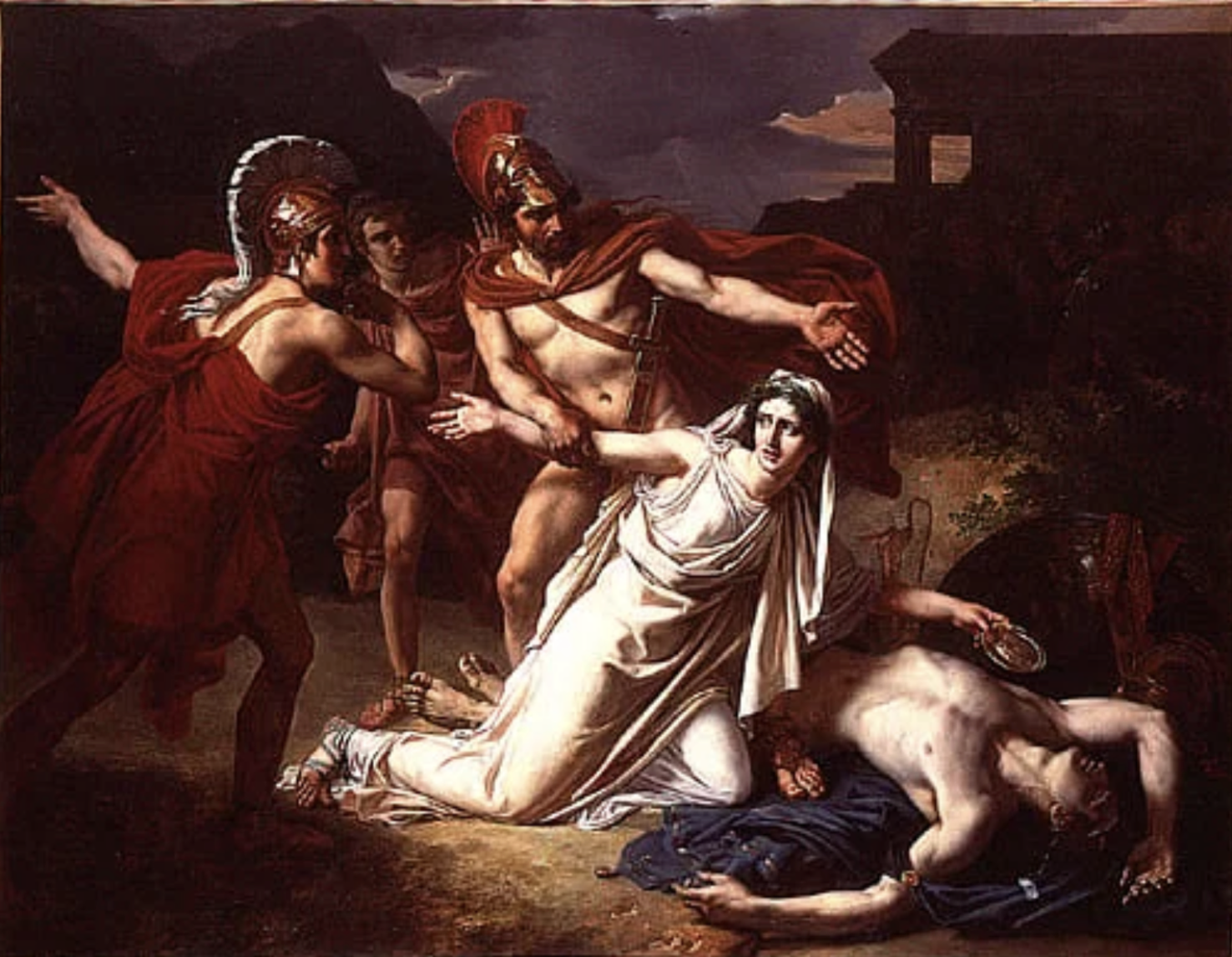In chapters two and three of her book, Sontag chooses to discuss photography as opposed to other forms of digital media. She does so because she believes that photography has a sort of monopoly over human memory. People store and associate specific photographs with different events, those photographs are what construct the very meaning that is attributed to something. She cites Robert Capa’s photograph, “The Falling Soldier”, from the Spanish Civil War when making this point. She argues that this photograph has become the face of the war within people’s memories. If one is to think of the Spanish Civil War, one thinks of Robert Capa’s photograph. But what is it that makes this photograph, and others that have the same effect, so memorable? Robert Capa’s photograph displays a Republican soldier at the moment of his death– having just been shot and in the process of falling to the ground… a shocking sight. Shock. Images were expected to grab attention, surprise, and startle the viewer. This emotional response is what burns them into memory forever.

"The Falling Soldier" by Robert Capa. September 5, 1936
Sontag discusses how shock has become the driving force for consumption and source value of photojournalism. Photography and death have always been linked, but to capture the “dying” itself is a concept much more modern. This is primarily due to the technological advancements in the art of photography itself. In early war photography, photographs often only depicted the aftermath of war because lugging a massive camera (with a tripod and the necessity to reload between pictures) to the battlefield mid-conflict was completely unrealistic. The monitoring of war that we know today was made possible by the advent of new equipment such as the Leica camera that could be carried by hand and reloaded more infrequently. Sontag believes the “era of shock” began in 1914 during the first world war. The atrocity was so unspeakable that written journalism did not do it justice. Technological advancements in photography allowed for photographs to display this true horror.
It is important to note though, that photographs may be able to convey something in a more powerful way than words, but that they are not and cannot be the “truth”. Similarly to Nicholas Mirzeoff, Sontag emphasizes the bias that is often overlooked in photos. She points out that photography has two contradictory features: it is both an objective record due to the impartiality of the machine itself, and a personal testimony due to the photographer that positioned and chose the photo. She also points out the danger of misreadings of photos and the role that memory plays in altering the meaning of a photo. She argues that the more distant the viewer is from the subject of the photo, the more room for interpretation there is. She exemplifies Here is New York: A Democracy of Photographs an exhibit dedicated to the images of 9/11 and its aftermath. This exhibit is unique as it is composed of photographs from both professionals and amateurs and when displayed, all photographs were unnamed and un-captioned. Sontag discusses how this not only exemplifies the feature of photography to be medium with no advantage over the untrained but also that this exhibit worked because all the viewers had personal and emotional understandings of the subject matter. One particular photo from the collection shows a scene before the attacks of people sitting on a bench in Lower Manhattan, gazing out at the cityscape of New York. When this photo was taken, it held an entirely different meaning than looking at it now. A viewer today would immediately notice the twin towers and be reminded of 9/11.

Lower Manhattan before the 9/11 attacks. This photo is part of the "Here is New York" collection.
Memory also plays an important role in dictating which wars are worthy of international representation. Sontag notes that wars remembered internationally were not remembered for their cruelty or severity, but for being invested in larger struggles. For example, wars fought under the guise of “democracy” are the ones deemed ‘worthy’ of coverage.

This photo is taken of Tigray defense force soldiers after an Ethiopian airforce plane was downed in Mekelle, Ethiopia in 2021. There has been an ongoing conflict in the Tigray region of Ethiopia since 2020 that has caused thousands of casualties and displaced an estimated 2 million people. This is just one example of a war that does not get covered nearly as much as wars like Russia's war on Ukraine, in the media. Coverage of wars seriously affects global opinion, funding for aid, and outcomes of conflicts. When major state actors deem certain wars 'worthy' and 'not worthy' of coverage, it implies what types of lives they deem 'worthy' and 'not worthy' of living.
In Butler’s piece, she takes the questions of ‘worthiness’ that Sontag begins to raise further and applies them to human life and death. She discusses how war divides populations into those whose lives are valuable and those whose lives aren’t. She explores this topic through the concepts of grief and precariousness. By precariousness, she refers to the inherent vulnerability and necessity for the nurture of human life. Because humans may die, it is necessary to care for them so that they can live. The grief of a human is expressed far before their actual death. Since birth, grief is expressed in the form of care and nurture. However, this creates an important complex that Butler points out: “Only when loss matters, do the conditions of life appear”.
By following the news, it is clear that certain lives appear to “matter” more than others. Butler references the mass public grieving after 9/11 and how non-US nationals and illegal workers were excluded from this. From Antigone’s illegal burial of her brother in 441 BC to the shame and backlash that the AIDs vigils have been met with, governments have always attempted to regulate who will be publicly grieved and who will not. Butler asks why this has to be the case.
Painting by Sebastien Norblin, 1825 CE of Antigone with Polynices' Body

Precariousness is not only formed by the nurture of one's own family and relatives but of social society as a whole. The sense of safety and community that is created by political policy and the rule of law often creates a deep sense of nationalism. Nationalism and ideals of self-defense create a differentiation between those belonging to the ‘nation’ to whom life and existence depend and those excluded from the nation and deemed a threat.
Butler concludes by emphasizing the need for recognition of shared precariousness. Humans are all interdependent by nature and war seeks to deny this by excluding some and including others by its bounds.